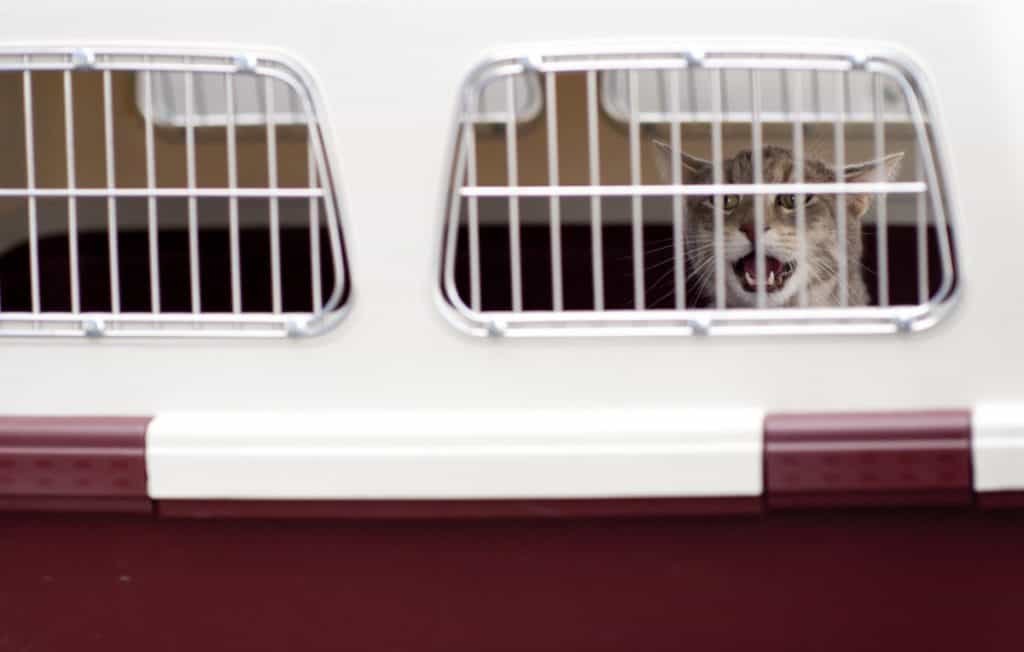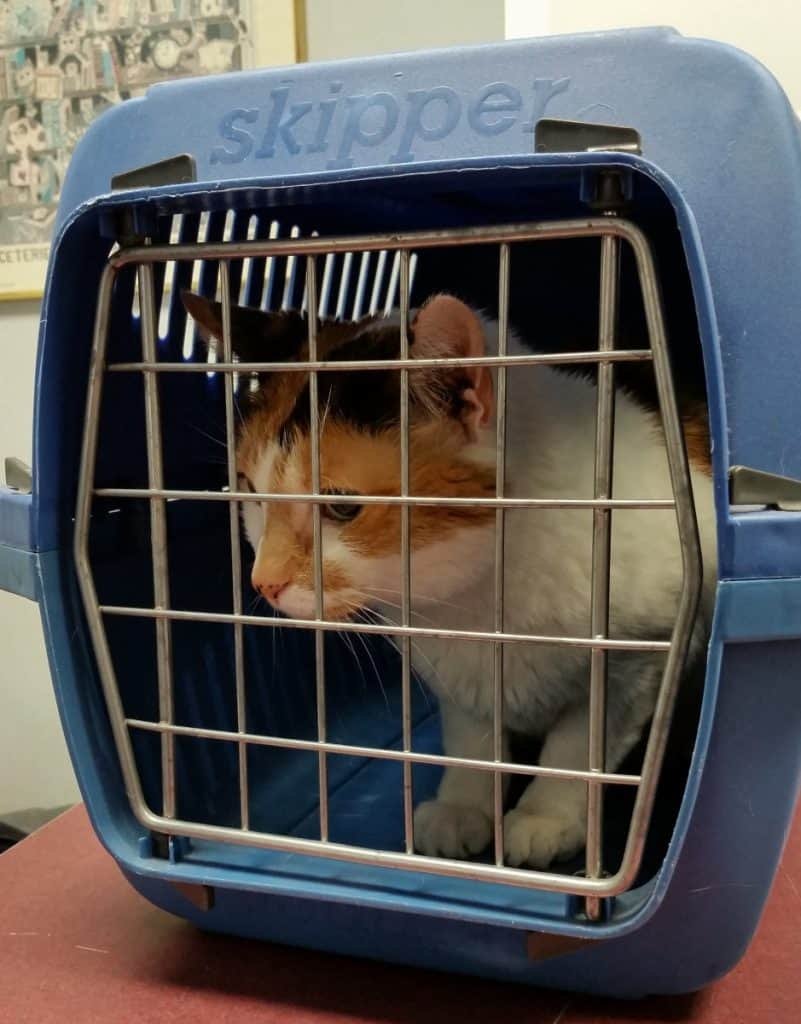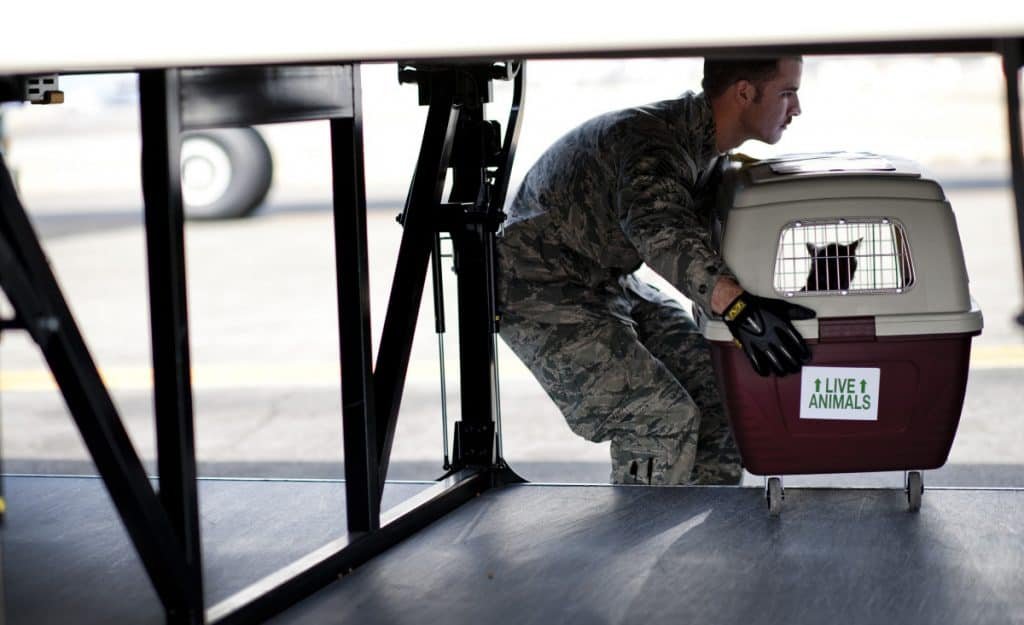Update: Most airlines are now avoiding taking pets on the cargo compartment due to the pandemic. Many flights are being canceled, so they are not being able to prepare for the logistics of taking live cargo right now. Please get in touch with the airline to ensure you can still take your pet with you.
Having pets and going away on long trips require a lot of thinking ahead, whether you’re taking them with you or leaving them in the care of others.
To bring your pet with you while moving to Brazil, you’ll be required to bring an International Veterinary Certificate/Pet Passport issued or endorsed by an Official Veterinarian from your home country’s Veterinary Authority.
And If you’re planning on moving to a different country like Brazil and bringing your cat and/or dog with you, there are a few things you need to know before you get here.
Also, if your pet has never been on a long trip before, some training will be required, which we’ll also go over on the course of this piece.
There are many questions regarding this subject from people looking to move to Brazil with their pets, and I hope to clear most of them by the end of this article.
Mandatory Documents for your Pet to Enter Brazil
As we stated at the beginning of our article, the International Veterinary Certificate/Pet Passport (which you can find on the Brazilian government website here) is the mandatory document you’ll need for your pet to be allowed inside the country.
Here are the basic sanitary requirements for each type of animal that document must contain:
Cats & Dogs

– Health Certificate issued by a Registered Veterinary, attesting the animal’s good health, valid for three days for the issue of the International Zoosanitary Certificate.
- If you’re a US citizen, you can check the USDA’s portal to find a full step by step on how to get your pet’s Health Certificate. You can also check your state’s NVAP Coordinator for a list of accredited veterinarians near you.
- If you’re anywhere else in the world, check your state’s professional regulation office for Vets to check if their registration is valid and effective.
– International Zoosanitary Certificate issued by your Veterinary local authority, attesting that in the 40 days before the date of the flight, there were no contagious diseases in the perimeters where the animal resides
– Vaccination Card confirming Rabies Vaccine, also provided by a Registered Veterinarian
Note: the International Zoosanitary Certificate and the Rabies Certificate must include:
– Pet Owner’s: full given name, current address (street, number, city, State, and Country);
– Pet’s: given name, breed, sex, date of birth, size, fur type, and particular features;
– Indication of Origin and Destination countries;
– Confirmation that the animal was examined within 10 days before the boarding date, not showing any clinical signs of diseases specific to its breed. A Registered Vet can also provide this.
The rabies vaccine must be taken at least 30 days before your arrival date in Brazil (in case of first vaccination) and valid for a year. Pets less than 3 months old are not required to be vaccinated.
Birds
Certification issued by an Official Veterinary indicating the pet bird is free of psittacosis, also known as parrot fever and that can be contagious to humans.
Exotic Animals
For any other animals which are not dogs, cats, or birds, a previous authorization by the Brazilian Ministry of Agriculture, Livestock and Supply (MAPA) it is mandatory to enter Brazilian territory.
There are some restrictions on exotic birds, to which an Import Permit issued by the Brazilian Institute of Environment and Renewable Natural Resources (IBAMA) is necessary.
Although the website is in Portuguese, you can check the requirements on IBAMA’s portal and request authorization to bring your pet to Brazil.
You can check all MAPA’s official sanitary guidelines here. Ensure your pet documentation is in compliance, and you have all the correct papers at hand when you need it at the airport.
Keeping them together in a small case is a good idea to keep you from getting anything lost.
Checking the Airline Companies Policies and Making Reservations for your Pet
Airline companies have very different policies from one another regarding boarding animals inside the airplane. So it’s a good idea to check as many companies as you can to make sure which one fits best for flying your pet and yourself.
They each have different rules about what breeds are not allowed in the company’s planes, restrictions on which animals can or cannot be transported onboard in the cabin with you, kennel sizes, etc., so make sure to catch up on all details.
After you check the policies and book your flight, get in contact with the selected airline company customer service and make reservations for your pet, which will require a transportation fee based on where your pet will be transported (in the cabin or the cargo área).
Some companies provide this service while you buy the plane ticket for yourself, so make sure to check that option.
If your pet is being transported in the cargo compartment, it is advised to request the most direct routing possible for your pet, even if the itinerary doesn’t exactly match yours.
It’s in your pet’s best interest to stay in transit inside the plane for the least amount of time possible, so check your best options.
How much does it cost to take my pet on the plane with me?
There are many airline companies you can choose from to take your pet on the plane to Brazil with you, so we’re going to list some of them for you to have an estimate on transportation prices and fees.
| AIRLINE COMPANY | IN THE CABIN (IN USD) | CARGO AREA (IN USD) | |
| Air Canada | 180.00 | ||
| Air Europe | 165.00 | 260.00 | |
| Air France | 150.00 | 240.00 | |
| American Airlines | 150.00 | 200.00 / 150.00* | |
| Delta Airlines | 75.00 | 150.00 | |
| Emirates | Between 500.00 to 800.00 | ||
| United | Calculated by the airline company |
*To Brazil only
General Cares To Consider Before Boarding The Plane
Now that we got all the documentation required out of the way, we must think about your pet’s health and well-being.
I mean, being kept trapped in a kennel for hours during a flight will require your pet to be well adjusted and adapted, so it’s important to study all the possibilities.
Pet Breed & Age
Some airline companies do not allow some types of breeds on flights, such as brachycephalic cats/dogs, snub-nosed dogs, or any ‘mix’ as checked pets.
Check with the selected company which breeds are not accepted on planes to avoid unpleasant surprises right before boarding.
Getting used to the Kennel
If your pet is not used to being transported inside a kennel, you might want to start training it, as it will take some getting used to.

It needs to realize that the kennel is a safe, comfortable place, so positive associations with treats and affection, for example, are encouraged. Getting your pet used to the sound of planes and engines is also a good idea, so it won’t get scared when it’s time to board.
It is advised that this adaptation should start at least 15 days before the date of your flight, giving your pet enough time to understand how the process works and be eased into it. Here are some tips for creating a better interaction between your pet and the kennel:
- Leave the kennel door open and accessible to your pet in a certain place of your house. That way, he’ll be able to explore by itself and get more comfortable with it.
- Offer some treats and play with it inside the kennel, making it “friendlier” to your cat/dog.
- While your pet is inside the kennel, try the following exercise daily: close the kennel’s door for a little while, increasing the time it stays in day after day so that it can get more familiarized with it. Leaving the room for a while is also a good idea, so it will get used to you not being there all the time.
Natural ingredients such as passionflower and valerian can reduce stress or even alternative methods like aromatherapy (spraying certain scents on a blanket, for example, can calm your pet down).
The use of drugs and sedatives is not recommended while boarding your pet on a long flight.
If you’re having trouble with the process, check with your vet the best conditions to transport and carry it on the plane to manage and control it’s anxiety, avoiding more serious issues like dehydration.
Weather
The natural weather and temperature of your destination place are something you must consider, as it can be totally different from the one in your home country, which can make your pet adaptation a bit harder.
If you’re moving to Rio de Janeiro, for example, and your pet is used to the cold (or just not really used to very hot places), maybe moving in the middle of the year is the best idea, as the weather in Rio is much cooler and pleasant.
So, please do some research on the usual temperatures in the city you’re moving to in Brazil, as it will help you decide the best time of the year for your pet to adjust to its new life.
If you’re moving to a place with higher temperatures than your pet is used to, a good fur trimming might also come in handy.
Boarding the Plane
As I said on the topic above, each airline company has its own policies and rules concerning boarding animals inside a plane, based on the animal’s weight and size.
Make sure to check it all thoroughly if there’s any chance you can bring your pet with you to the cabin.
In general guidelines, there are two ways your pet is allowed to board on the plane with you on international flights (not only applied to Brazil):
In the Cabin
You can take your dog or cat with you in the cabin, but it must be inside the kennel at all times while inside the plane, not being allowed out even if it’s a small-sized breed.
In the Cargo Compartment
Some people are terrified of this option, thinking the poor animal will be treated like luggage in a dark and small place, but that’s not the case at all.
Your pet will be put in a depressurized and bright place, always boarded last and the first to be taken out of the airplane.

The airline companies have trained staff and ground handlers with special orientation for dealing with live animals on board, providing it with food and water if any delays on the company’s part should occur.
To keep your pet comfortable and well inside the kennel during flight, the following is recommended:
- Keep the kennel clean and lined with hygienic mats
- keep water and food inside the kennel for your pet.
- leave a piece of your clothing inside, so it can smell you on it and become more relaxed
- keep your pet’s tag and kennel updated with your personal contact information
Last-minute tips before boarding with your pet
Now that you know everything there is to know to bring your pet to Brazil safe and sound, here are a few last-minute tips to make the flight easier for it:
- On the day before the flight, it is advised to clean your pet and clip its nails.
- On the day of the flight, give your pet light food to avoid motion sickness. The last meal should be given 2 to 3 hours before the flight.
- Give your pet some water at home, at the airport, and right before the plane departure, so it stays hydrated enough to withstand the time spent on the flight. You can freeze the water overnight, so it melts during the flight, and your pet has fresh water all the way in.
- Before boarding, take your pet for a little walk, as it will help with the stress.
- Avoid boarding the plane too soon, except if your pet is too jumpy at the airport. Play with it for a while to help it relax
- Bring your pet’s favorite toy with it inside the kennel, as it can really help relieve the stress
We think you might like some of our other posts related to living in Brazil:
- Living in Rio: How much does it cost in USD?: We broke down all the main costs of living in Rio so that you don’t have to do the math!
- Thinking Of Working In Brazil This Summer? Read This: All the work visa types and requirements so you don’t miss anything!
- Curitiba: Best City To Live In Brazil: an overview of the city and its neighborhoods. Curitiba is considered a green city role model, so check this post out!
Related Questions
Is a Pet Microchip required for my pet to enter Brazil?
No, a pet microchip is not necessary for the pet to be allowed in the country.
What About Service and Emotional Support Dogs? How are they transported inside the plane?
The general guidelines for pet transportation inside planes are not applied to fully-trained service animals and emotional support/psychiatric service dogs, as they can properly behave during flights.
If they meet the company’s requirements, they can fly for free and be kept by their owners’ side wearing a harness, without needing to be caged in a kennel.
Are pets allowed to travel without a tutor on the plane?
For example, if you’ve moved to Rio or somewhere else in Brazil and someone is sending your pet over by plane, it can fly without a tutor, but you’ll need to check with the selected airline company for the proper arrangements and instructions
Are pets allowed anywhere in Brazil?
No apartment manager or landlord can prohibit you from having pets unless proven to be a risk to the neighbors’ safety, health, and peace.
